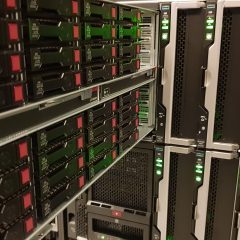Disable ATS Heartbeat
KB ID 0001529 Problem After ESX 5.5 Update 2, VMware added ATS Heartbeat.Some vendors, (like HPE SureStore and VSA) recommend that this is disabled. I can’t find any info about whether it’s safe to do this in production, so to be on the safe side I placed the hosts in maintenance mode first. Enter Maintenance Mode Use the following command; vim-cmd /hostsvc/maintenance_mode_enter Disable ATS Heartbeat Use the following...
Virtual SAN: Suppress ‘Datastore Usage on Disk’ Alarm
KB ID 0001527 Problem While deploying a HPE StoreVirtual VSA this week. We noticed all the local Datastore were showing an ‘Alarm’. If you are unfamiliar with Virtual SANs, then you give all the LOCAL Storage to them, which then gets ‘aggregated’ and provided back to the host(s) as fault tolerant clustered storage, like so; Which is great, but the VMware hosts just see that their LOCAL Datastore(s) are full,...
HPE Synergy ‘Unable to Apply Local Storage Settings’
KB ID 0001497 Problem While deploying some Blade severs, I was unable to get the ‘Local’ storage on the blades themselves to configure, (when setting up the server profiles). They were throwing this error; Unable to apply local storage settings on server (Enclosure-name}, bay {number} because HPE OneView cannot communicate with the integrated Smart Array controller : Locked. Resolution Ensure that there is an integrated...



